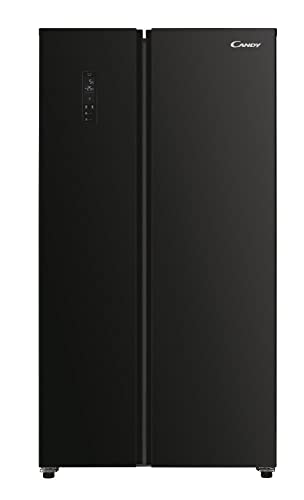How To Outsmart Your Boss Fridge Freezer Frost Free

Why Choose a Fridge Freezer Frost Free?
You will save time and effort when you select a frost-free fridge freezer. These models also have more storage space than those without this feature.
The surrounding areas of the kitchen from water drips during defrosting by putting towels or old sheets close to the appliance.
There is no need to defrost.
Fridge Freezers that use Total No Frost technology circulate cool air constantly throughout each compartment. This stops the formation of ice on the freezer walls. This is a great option for those who want to store lots of items in the freezer, but don't like the thought of having to manually defrost it every year. If you find yourself with an accumulation of ice the appliance will usually go through an automatic defrost process.
The most obvious benefit of having a frost-free freezer is not having to defrost it. This can be a lengthy and time-consuming process that can take up to 24 hours every time. A frost-free freezer allows you to store more food since ice won't take up space.

Another advantage of a frost-free freezer is that it will have greater energy efficiency than fridges with conventional defrost systems, meaning you will save money on your electric bills. If you have to defrost a fridge freezer, this is typically due to the fact that it has accumulated an excessive amount of ice. The ice blocks the refrigeration system from efficiently cooling the freezer.
It is usually caused by an unreliable thermostat that isn't regulating the temperature correctly. It is also possible that the freezer has been shut and opened frequently, which could cause humidity to enter the freezer. To avoid this, you should always wait until food is cool before putting it into the freezer, and also make sure that all containers are tightly sealed.
By ensuring that your fridge is not overfilled it will decrease the chance of defrosting it. Keep food items in separate containers, and only use small quantities at a time instead of filling up your freezer. This will also ensure that the freezer's fan isn't blocked and it can circulate air properly.
Verify that the seal on the door isn't damaged. This is what prevents room air from getting into the fridge and freezer. If the seal is damaged, warm air can enter the fridge and cause frost to build up on the evaporator. To avoid this, you can clean the evaporator coil using a special spray, which can help in removing any frost that has accumulated up.
No more the accumulation of ice
The absence of ice accumulation means that you'll have to defrost your freezer less frequently. If you notice frost on the outside of your freezer it could be a sign that your fridge-freezer is not functioning properly when it comes to defrosting. If a refrigerator or freezer is properly defrosted it will shut down its cooling system every 60 minutes for a period of 20 minutes so that the heaters will prevent frost from building up behind the back wall and also on the evaporator. This allows air to flow freely between the freezer and refrigerator, preventing food from freezing into a hard consistency.
If your ice buildup is the result of hot air entering your freezer, you can reduce this by checking that the door seal isn't broken or blocked. It's also worth making sure that you're not overloading the freezer or storing things in plastic bags or other containers that don't allow cold air to circulate around them. It is also important to ensure that your freezer is not located close to a radiator or a heater.
In the event that you need to take out an accumulation of frozen ice from your freezer it's best not to use a knife or any other sharp tool as it could cause damage to the appliance. Instead, unplug the freezer and let the ice melt. Then, clean the interior, and plug it into the freezer.
You can also put an old towel in front of the refrigerator and let it melt. You can then wipe the freezer clean with a dry cloth and verify whether the temperature is right before replenishing it.
The purchase of a fridge freezer with frost-free capabilities will save you a lot of time and effort, so make sure to take this into consideration when choosing your next kitchen appliance. If you'd like further guidance or assistance in choosing your new freezer, get in touch with an Abt expert. They'll assist you choose the right appliance to fit your lifestyle and budget. They'll also assist you with installation and any post-sales problems you may have.
No more smells
The frost-free models aren't affected by this issue. Contrary to conventional fridge freezers, in which bad smells could make their way into the compartment of the freezer and contaminate food, the frost-free models do not have the same issue. They are cooled by air that circulates through the compressor. The air is chilled to a temperature of 0°C so that it doesn't cause unpleasant odours. It is still essential to store food items in airtight containers or wrap them in polyethylene bags, plastic coated frozen paper, heavy-duty aluminum foil, or something similar to reduce the amount of moisture inside the fridge.
These fridge freezers, despite their name "frost-free", still require defrosting. This is because they're not as efficient as traditional freezers. The evaporator coils sit in the back of the freezer, and a defrost heater is used to melt frost when it forms. If this isn't working, frost may accumulate on the evaporator, leading to problems with cooling.
If you don't utilize an automatic defrost device, you'll need to defrost the freezer manually periodically. This only takes just a few minutes and won't affect the taste of food. If you have a Frost Free model with Total No Frost technology, it won't require defrosted since it constantly circulates cool air through both compartments stopping any ice from ever building up on the cabinet's walls.
The smells of a refrigerator freezer are caused by volatile chemicals that, in some cases, resemble water, while others don't. If the bad smells are the result of spoilage of microbial matter, the chemicals will be released into the freezer and contaminate the food inside it. If the odours in the fridge aren't caused by anything, they'll stay there until they are expelled through the vents, or eliminated by defrost cycles.
If smells begin to permeate the freezer, it's most likely a problem with the seal or an issue with the cooling process. Moisture can get into the fridge freezer if the door to the freezer is left open, allowing warm, humid air to get in or if food containers are packed too tightly, restricting airflow.
Easy to clean
Freezers in the fridge that do not require manual defrosting are easier to clean. You can clean the freezer using baking soda and water solution once it's empty. Just mix one tablespoon of baking soda in one cup of warm water, then dip the microfiber cloth in it and wipe clean all interior surfaces. If the seal around the door gets dirty then you can clean it. The cooling coils that are located at the back of the fridge are also easier to clean because they do not contain the ice. Be sure not to block the tiny vents inside the freezer either, these are designed to let air circulate. This is where papers crumpled up crumbs, crumpled up crumbs, and twist ties can get caught, causing the fan not to work.
If your freezer is smelling of spoiled food, you may require activated charcoal in an open container inside the freezer for a couple of days to reduce or eliminate the odor. You can purchase this kind of charcoal in the cleaning section of the grocery store.
It's a good idea cover the floor of your freezer with old towels or cloths before you put in your frozen food items. This will stop melting ice from taking up too much moisture. Make sure to wash your freezer drawers, bins and the ice tray prior to putting them back in the freezer.
To avoid the need to defrost to avoid the need to defrost, purchase a refrigerator/freezer equipped with Total No Frost Technology. This technology keeps the freezer compartment at an even 0°F and circulates cool air to keep the formation of ice on the cabinet walls. This option will save you time and money in the long run and will keep your food fresher for longer.
Defrosting a conventional refrigerator is still required at least once per year or when the ice layer has reached an amount of 1/4 inch. Always ensure that americsn fridge freezer on the door is sealed correctly. Close the freezer on a piece of white paper. If the gasket breaks easily, it should be changed.
